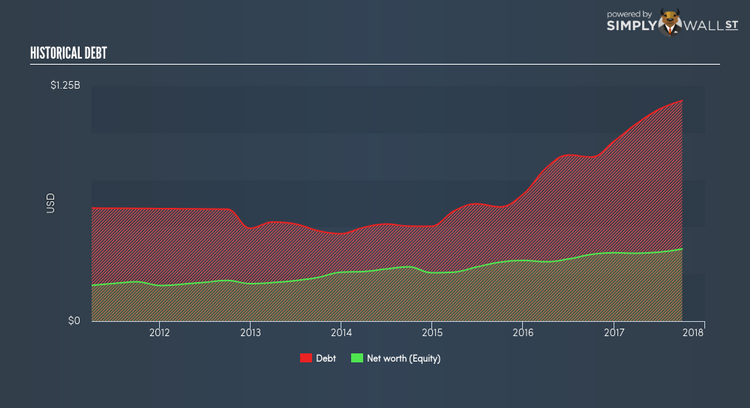Are Coca-Cola Bottling Co Consolidated’s (NASDAQ:COKE) Interest Costs Too High?

Investors are always looking for growth in small-cap stocks like Coca-Cola Bottling Co Consolidated (NASDAQ:COKE), with a market cap of US$1.70B. However, an important fact which most ignore is: how financially healthy is the business? Assessing first and foremost the financial health is vital, as mismanagement of capital can lead to bankruptcies, which occur at a higher rate for small-caps. I believe these basic checks tell most of the story you need to know. However, I know these factors are very high-level, so I recommend you dig deeper yourself into COKE here.
Does COKE generate an acceptable amount of cash through operations?
COKE’s debt levels surged from US$675.41M to US$955.98M over the last 12 months , which is made up of current and long term debt. With this increase in debt, COKE currently has US$21.85M remaining in cash and short-term investments for investing into the business. Moreover, COKE has generated US$162.00M in operating cash flow during the same period of time, leading to an operating cash to total debt ratio of 16.95%, signalling that COKE’s operating cash is not sufficient to cover its debt. This ratio can also be interpreted as a measure of efficiency as an alternative to return on assets. In COKE’s case, it is able to generate 0.17x cash from its debt capital.
Does COKE’s liquid assets cover its short-term commitments?
Looking at COKE’s most recent US$457.91M liabilities, the company has maintained a safe level of current assets to meet its obligations, with the current ratio last standing at 1.3x. Usually, for Beverage companies, this is a suitable ratio since there is a bit of a cash buffer without leaving too much capital in a low-return environment.
Does COKE face the risk of succumbing to its debt-load?
COKE is a highly-leveraged company with debt exceeding equity by over 100%. This is not uncommon for a small-cap company given that debt tends to be lower-cost and at times, more accessible. We can test if COKE’s debt levels are sustainable by measuring interest payments against earnings of a company. Ideally, earnings before interest and tax (EBIT) should cover net interest by at least three times. For COKE, the ratio of 3.01x suggests that interest is appropriately covered, which means that debtors may be willing to loan the company more money, giving COKE ample headroom to grow its debt facilities.
Next Steps:
COKE’s cash flow coverage indicates it could improve its operating efficiency in order to meet demand for debt repayments should unforeseen events arise. However, the company exhibits an ability to meet its near term obligations should an adverse event occur. This is only a rough assessment of financial health, and I’m sure COKE has company-specific issues impacting its capital structure decisions. You should continue to research Coca-Cola Bottling Consolidated to get a more holistic view of the stock by looking at the areas below. Just a heads up – to access some parts of the Simply Wall St research tool you might be asked to create a free account, but it takes just one click and the information they provide is definitely worth it in my opinion.
1. Historical Performance: What has COKE’s returns been like over the past? Go into more detail in the past track record analysis and take a look at the free visual representations of COKE’s historicals for more clarity.
2. Other High-Performing Stocks: Are there other stocks that provide better prospects with proven track records? Explore a free list of these great stocks here.
To help readers see pass the short term volatility of the financial market, we aim to bring you a long-term focused research analysis purely driven by fundamental data. Note that our analysis does not factor in the latest price sensitive company announcements.
The author is an independent contributor and at the time of publication had no position in the stocks mentioned.

